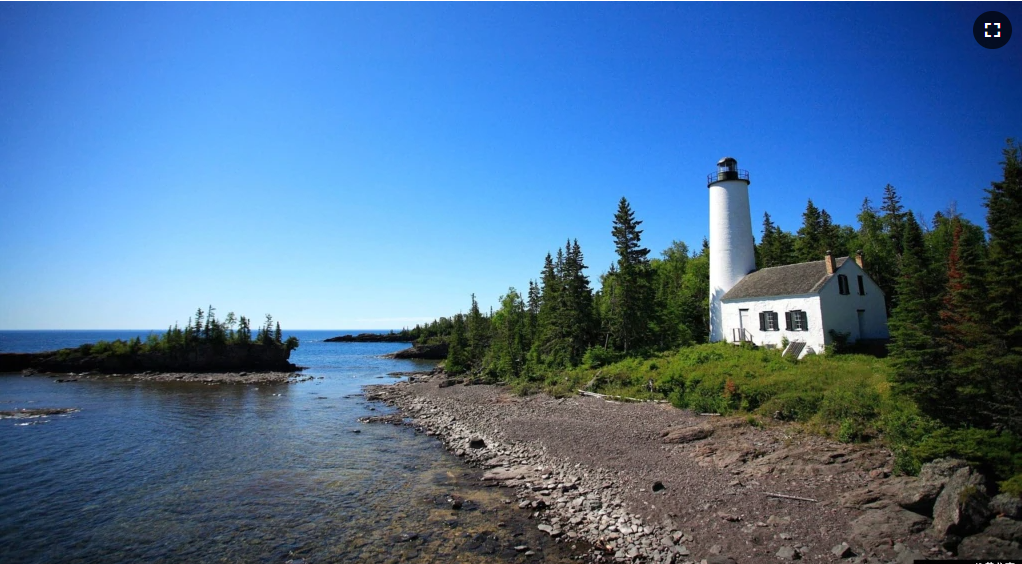This week on our national parks journey, we explore a remote island near Michigan’s border with Canada. It sits within a huge freshwater lake. It is one of the least-visited national parks in America.
Welcome to Isle Royale National Park!
Isle Royale is surrounded by the deep blue waters of Lake Superior, the largest freshwater lake on Earth by area. The park’s quiet forests and rocky shores offer a kind of solitude and peace not found in some of the more popular national parks.

No cars or other wheeled vehicles are permitted on Isle Royale.
There are no real roads on the island. The only way to get to the park is by boat or sea plane. The National Park Service operates shuttle boats that take visitors to Isle Royale. The boats leave from two Michigan ports. A boat trip to Isle Royale takes three to five hours. Waters are often extremely rough.

Isle Royale is the largest of the islands within the national park. It is 72 kilometers long.
The entire national park protects a total area of 230,000 hectares, including some 450 islands that surround Isle Royale. Fifty-two-thousand hectares is land. The rest is water.
Isle Royale became a national park in 1940. In 1980, officials named it an International Biosphere Reserve because of its unique ecosystem.
Its remote location is part of what makes it among the least-visited national parks. But, once they arrive, most visitors stay a while. The average stay for visitors to Isle Royale National Park is 3.5 days. The average stay for visitors to most other national parks is just four hours.
Isle Royale offers hiking, camping, boating, and even scuba diving. The extremely cold waters of Lake Superior help keep shipwrecks in excellent condition. The National Park Service protects 11 sunken boats for divers to explore. They are reminders of Lake Superior’s commercial shipping history.

The sunken wooden ship called The America is one of the most popular dive sites. The America carried passengers, mail, and supplies to many towns along the shores of Lake Superior. It first launched in 1898, and was used until 1928, when it was damaged. It sank to the bottom of the lake soon after.
Today, divers can swim through the ship’s ballroom, bedrooms and engine room. Painted on the ship’s engine is an American flag. Many divers take pictures of this sight.
The Rock Harbor lighthouse is another reminder of the former shipping industry. Workers built the lighthouse in the 1850s to help guide ships safely to the island’s copper mines.
The mining industry was short-lived, however. The lighthouse itself lit the way for ships for just 24 years. But, it still stands today. Inside, exhibits and information help visitors understand Isle Royale’s maritime history. A short hiking trail leads visitors to the lighthouse.
Visitors to Isle Royale share the trails with a well-studied population of moose and wolves. Both species migrated to the island sometime in the early to mid-1900s. Scientists believe that moose swam to the island. They think wolves walked there during a freeze of the lake sometime in the 1940s.

Scientists have closely studied the relationship between Isle Royale’s wolves and moose since the late 1950s. It is one of the best-studied predatory-prey relationships in the world. Researchers closely record their population numbers.
Much of the research takes place during the winter, when the trees are bare. The researchers fly over the island to observe the animals from above.
In early 2016, researchers from Michigan Tech University observed just two remaining wolves on Isle Royale.
The moose population, however, is growing. Scientists observed about 1,300 moose on the island this winter.

Animal research is the only winter activity going on at Isle Royale. The national park is closed each year beginning in late October because of the harsh weather conditions. It reopens in spring time the next year.
But for the other months of the year, Isle Royale offers refreshing lake breezes, green forests, and clear blue waters. Its stunning scenery and unusual solitude keep visitors returning year after year.
I’m Ashley Thompson.
And I’m Caty Weaver.
Ashley Thompson wrote this report with materials from the National Park Service. Caty Weaver was the editor.
________________________________________________________________
Words in This Story
rough – adj. not calm : having large waves, strong winds, storms, etc.
reminder – n. something that causes you to remember or to think about something
commercial – adj. related to or used in the buying and selling of goods and services
maritime – adj. of or relating to sailing on the sea or doing business (such as trading) by sea
predatory – adj. living by killing and eating other animals
prey – n. an animal that is hunted or killed by another animal for food
solitude – n. a state or situation in which you are alone usually because you want to be
